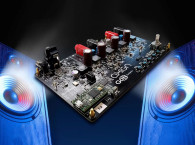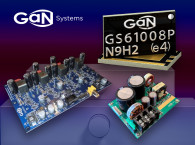Three important forces are now influencing the rise of the predominance of audio in both consumer experiences and technology design:
- Increased consumer expectations around the integration of higher-quality audio into their everyday experiences – from music to voice controlled devices
- Creative experimentation in content programming and services now that bandwidth is no longer a major gating item and high-quality headsets have become mainstream
- Technology advances in software and hardware accompanied by falling hardware costs, enabling audiophile quality components to miniaturize and migrate to everyday consumer electronic components.

When the emotional appeal of audio and its deeply embedded societal nature is combined with these three forces - some truly unique opportunities arise for audio technologists and product designers. This is particularly true in consumer electronics and automotive markets.
Home theaters, smart home applications, and the pervasiveness of mobile devices are the main areas of opportunity for audio innovation in consumer electronics. High-quality home theater sound is no longer the sole domain of audiophiles as every household engages in more media at home. Wi-Fi and Bluetooth-enabled smart speakers are part of those high-quality sound systems and are also distributed around the next-generation smart home to enable a variety of voice-enabled applications.
Increasingly diverse uses of these speakers in playing audio (from search request responses to immersive music) and in responding to audio command input (voice control) make quality improvement a priority. In Qualcomm’s “2019 State of Play Report”, sound quality was rated higher than cost considerations for smart speakers (same for true wireless earbuds in the 2020 edition of that report). Both Sonos and Google already offer smart speaker products that can handle higher volume and quality audio.
And drivers in every car category now want the same high-quality audio previously available only in high-end luxury model vehicles – both for entertainment purposes as well as for navigation, information, and safety systems. There are now cars with almost three dozen speakers positioned throughout the passenger compartment’s multiple audio zones, along with a variety of microphone inputs. New kinds of audio systems are being designed for electric vehicles (EVs) that have different interior acoustics than traditional cars. The design of an EV’s higher quality audio system will need to consider power efficiency, size, and weight – all of which are important factors in the quest to obtain greater driving ranges.
The audio quality expectations that now exist for cars also carry over into the boats, motorcycles, and all-terrain vehicles (ATV) markets. With these vehicles, audio system designers face additional challenges of creating products that can perform flawlessly in harsh environments (water, salt, dirt, and mud) and fit within the limited space and locations for audio gear found in boats, ATVs, and motorcycles. As in the case of cars, and especially EVs, the industry is working to develop products that deliver better quality and experiences in smaller and more energy efficient form factors – while still providing the connectivity and seamless integration the market demands.

Historically, Class-D amplifiers have been designed with Silicon MOSFET as the de facto transistor device technology. Now it is possible to design a new generation of amplifiers with GaN technology that enable new innovation in audio quality and product performance. With Silicon MOSFETs, designers are limited in audio performance by the switching speeds of these devices. GaN transistors can operate at a much high frequency that provides fast, clean switching transitions. The result is smaller and more efficient audio devices with notably higher quality audio performance in GaN Class-D audio systems.
Using total harmonic distortion (THD) measurements as an accepted example of industry benchmark, the use of GaN power transistors instead of Silicon in Class-D amplifiers results in a 10 times improvement in THD at 0.01% for GaN in comparison to 0.1% for Silicon. GaN’s faster switching capability is the key to this improvement. Faster switching results in smaller “dead time,” which means lower crossover distortion and a lower THD.
Design engineers have greater flexibility in tuning the performance of both THD and noise floor as a result of GaN’s significantly superior switching waveform shape. As in the case of any Class-D amplifier design, increasing the frequency response is a trade-off between efficiency and noise performance. The advantage of GaN is that the frequency response bandwidth can be extended higher before the efficiency drops below, and noise floor pushes above, that of Silicon device-based designs. This means there are many more design choices for engineers to improve audio quality performance across several metrics without compromise.
GaN technology used in Class-D audio design will uniquely enable designers to create a new generation of innovative products that deliver improved audio performance along with increased energy efficiency in new, smaller form factors at prices that everyone can afford. aX
This article was originally published in The Audio Voice newsletter, December 17 2020 (#307). Click here to register to The Audio Voice






